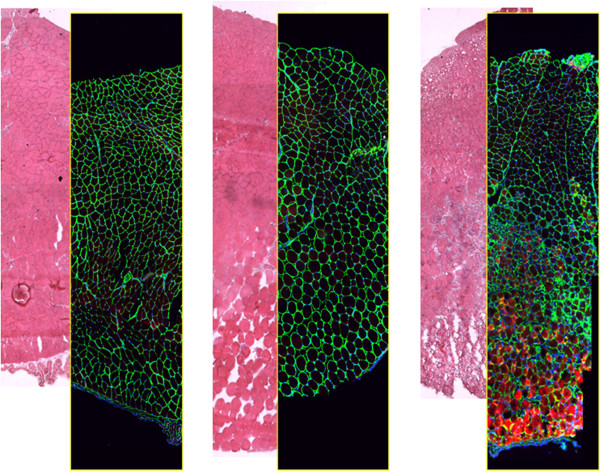Figure 2.

Integrity of the extra cellular matrix following muscle injury. Hematoxilin- and eosin-staining (H&E) and immunofluorescence localization of the membrane basement component laminin (green) on serial cross-sections of murine Tibialis anterior muscle (only a portion of the muscle is shown). Thirty minutes before fixation, the muscle was subjected to two types of physical injury: mechanical stress by crunching and tearing with forceps (LEFT) and freezing by applying a liquid nitrogen-cooled steel forceps to the surface (facing down in the picture) for 10 seconds (CENTER). Apart for the edema and fiber swelling visible in the images on the right, no major alterations of the basement membrane are seen following focal injury. In mice injected with Evans Blue Dye (EBD, RIGHT), injury muscle fiber necrosis (red) is apparent 8 h after freezing thanks to accumulation of EBD in the interior part of the damaged fibers. The muscle fibers die and are either renewed or replaced within the intact scaffold represented by the membrane basement, which wraps each fiber.
